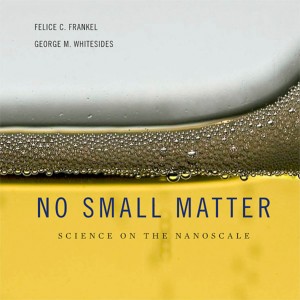According to a news item on Nanowerk, the Nanophase Technologies Corporation introduced a new nanotechnology-enabled window cleaning product at the International Window Cleaning Association Convention in Reno (Jan. 27 – 30, 2010). From the news item,
NanoUltra™ Super Hydrophilic Window Technology keeps windows cleaner longer than traditional window washing by providing an invisible protection to the surface of glass. The NanoUltra™ products impart a protection to the glass surface that is hydrophilic, allowing water to create a sheeting action that washes away dirt and grime. These revolutionary products also accelerate drying time, resulting in virtually spot and streak free windows. This high-performance product works using a two-step application method. First, NanoUltra™ Super Hydrophilic Window Pretreatment, a nano cerium oxide based product, is applied to provide both a chemical and mechanical polishing mechanism that restores glass to ‘like new’ condition. Then the NanoUltra™ Super Hydrophilic Treatment product is applied to maintain the super hydrophilic surface property and give windows the ultimate shine. The results can provide significant benefits to building owners and managers, professional window cleaners and window restoration specialists. In addition to potentially reducing liability and cleaning costs for the building owners, the NanoUltra™ technology offers up-sell and new business development opportunities for those servicing these patrons.
There’s more about the windows on Nanowerk here.
I’m happy to hear that I’m a step closer to self-cleaning windows although I wasn’t thinking of getting two new cleaning products. I want windows that are perpetually self-cleaning and not reliant on coatings that I have to reapply and which will likely leave streaks. This my problem with cleaning windows, i.e., streaks. Plus, I’m concerned about the birds. Won’t birds hurt themselves flying into shiny (“… ultimate shine …” ), clear windows?
SAFENANO, mentioned earlier this week (Jan. 27, 2010) has just announced two contracts which will provide information for the regulation of nanomaterials. From the news item on Nanowerk,
A consortium led by SAFENANO from the Institute of Occupational Medicine has been awarded two contracts by the Institute for Health and Consumer Protection of the European Commission’s Directorate General Joint Research Centre (JRC) concerning the development of specific advice on the assessment of nanomaterials under REACH. The first project, REACH-NanoInfo (also known as RIP-oN2), addresses the REACH information requirements on intrinsic properties of nanomaterials. The second project, REACH-NanoHazEx (RIP-oN3), addresses undertaking exposure assessments and conducting hazard and risk characterisation for nanomaterials within the REACH context.
If you want more information about the projects, go here.
I’ve been lazily following the nanotechnology scene in NY state since 2008 when IBM awarded $1.5B to the state for nanotechnology. From the announcement on Nanowerk,
The investment will go toward three separate and complementary components of a comprehensive project, supporting the nanotechnology chip computer activities of IBM: the expansion of IBM’s operations at the College of Nanoscale Science and Engineering at the University at Albany (Albany NanoTech), the creation of a new, advanced semiconductor packaging research and development center at a to be determined in Upstate New York, and the upgrading of IBM’s East Fishkill facility in Dutchess County.
Since then, I’ve noticed, with much interest, the University of Albany’s nanotechnology outreach efforts (latest posting about it here). It seems they have also reached into high schools. According to the news item on Nanowerk,
A trio of high school seniors conducting hands-on nanotechnology research through internships at the College of Nanoscale Science and Engineering (“CNSE”) of the University at Albany have been selected as semifinalists in the 2010 Intel Science Talent Search (“Intel STS”), the nation’s most prestigious pre-college science competition. The three are among just 300 students chosen nationwide to compete for $1.25 million in awards, with 40 finalists scheduled to be announced on January 27.
I did track down the Jan.27.10 announcement of the 40 finalists but have not found a list of names. From the announcement,
New York again has the highest number [emphasis mine] of young innovators in this competition (11 this year). Following New York is California with eight finalists; Texas with three; Illinois, New Jersey and Oregon with two each; and Alabama, Connecticut, Indiana, Massachusetts, Maryland, Michigan, North Carolina, North Dakota, New Mexico, Oklahoma, Virginia and Wisconsin with one finalist each.
Unfortunately I don’t have a neat segue for my next bit which is about science journalism in the UK. According to the news item on physorg.com,
The study ‘Mapping the Field: Specialist science news journalism in the UK national media’ was led by Dr Andy Williams of the School of Journalism, Media and Cultural Studies. It was based on a survey of UK science, health, and environment news journalists, and 52 in-depth interviews with specialist reporters and senior editors in the national news media.
According to the research there has been an increase in the number of specialist science journalists in the UK national news media and there is a growing appetite for science news within newsrooms.
Also noted are the problems that all journalists are currently facing as newspapers and magazines struggle for survival.
If you want to read more about the study, you can also go here, where more information such as this is featured,
Whilst the extent of the influence of public relations varies widely between different news outlets, there is a general sense that PR has become an increasingly important and unavoidable presence over the last decade. A significant minority, 23%, believe science specialists rely on PR too much, and 25% of respondents said they now use more PR than previously. Many interviewees complain that a lot of their time is spent trying to convince news desks not to run poor-quality “bad science” stories they have seen on the news wires and/or in eye-catching press releases.
The struggle between journalists and PR practitioners is longstanding and worth discussing in a posting next week. Meanwhile, happy weekend.
